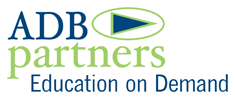
So, you are hiring an instructional design consultant — bravo! Are you ready for eLearning design success? Do you have all the keys in place for eLearning implementation?
There are three major keys to implement eLearning: curriculum, learning management system (LMS), and instructional design. This last component is just one key. The other two that are required for eLearning success are 1) a seamless learning management system (LMS) and 2) an established, peer-reviewed curriculum. It is this latter key that often seems to be a mystery. All three are mandatory for eLearning implementation. Most professional organizations are well on the road with their LMS. Instructional design is a high priority. However, the third key — curriculum — frequently is missing.
What is curriculum? Once I understood an association executive to proclaim the curriculum is in place because there are numerous education offerings: workshops, seminars, conference sessions, and even online courses. When I heard that comment, I wondered “but what is the knowledge and practice foundation? Where are the written, peer-reviewed documents that guide and shape all of these education options? Where is the curriculum?”
In any education setting, there are numerous curricula in play. There is common acceptance of four curricula generally occurring simultaneously — written, taught, expected, and completed:
Written — the written curriculum is prepared by subject matter experts and others as needed who lead with best practices. This curriculum is written, reviewed, revised, and updated on a regular basis. Ideally, there is a curriculum review team working with staff to continually guide the professional curriculum and its implementation.
Taught — the taught curriculum includes content and processes actually delivered in a class, workshop, or other training setting (both in-person and digital). The preference is that the instructor uses the written curriculum to shape and deliver learning experiences. If there is no written curriculum, the instructor (usually a subject matter expert) teaches based on her expertise and experiences. Such expertise shared through teaching can be quite beneficial; however, consistency within and across the curriculum can be hit or miss.
Expected — the expected curriculum is defined from the participant’s perspective: what the person expects to learn in the training session. These expectations for professionals generally are related to career growth and development. If there is a published curriculum, participants can share a set of common expectations. If not, the course title and descriptor will frame expectations. Regardless, the professional training room is filled with adult learners who have vast and varied experiences in the field; therefore, the expected curriculum will vary.
Completed — the completed curriculum is the actual learning for each individual student. If there is a post-course assessment, the success of the curriculum and its delivery can be measured by student success on the test. The completed curriculum also will vary based on all of the other curricula: written, taught, and expected. In the professional world, however, the ultimate measure of the completed curriculum is implementation in the work place.
In summary, ideally four types of curriculum appear in every training session: written, taught, expected, and completed. The last three occur for sure. The first, the written curriculum, appears if it is established. If curriculum is the mystery or a questionable key for your organization, it is time to review the status quo and get started.
Curriculum, LMS, and instructional design are three keys to eLearning success. To gauge your readiness for instructional design:
1) Do you have a unified learning management system that is operating seamlessly within your education world?
2) Do you have a written, peer-reviewed curriculum?
If your answer is no to either of these questions, get these aspects in order and then you will be ready to hire that instructional designer. With all three keys — LMS, curriculum and instructional design — in place, you will open the door to sustainable, best practices in eLearning.
